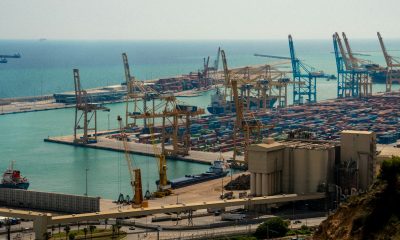Africa
Tourist Tax Powers Morocco’s Sustainable Tourism Boom
Morocco’s booming tourism—5.7 million visitors by April 2025—is driving municipalities to capitalize on the Tourist Tax. Applied per person per night, it funds local infrastructure while encouraging sustainable growth. With rising visitor numbers and investment, this tax becomes a vital, strategic tool balancing economic gains, regulatory oversight, and enhanced destination competitiveness.

As Morocco experiences record tourist numbers, the tourist tax is becoming a financial pillar for municipalities. Between strengthened legal frameworks and economic challenges, we take a closer look at a key instrument for balancing tourism growth and local development.
With 5.7 million visitors at the end of April, Morocco is turning the tourist influx into an economic lever through targeted taxation. The 2025 version of the local government tax collection has just been published. This collection presents the rules for the assessment, collection, and penalties of the main local taxes.
One of them is of particular interest to us, in this period of good weather and active preparation for the summer season: the Tourist Tax on tourist establishments and other forms of tourist accommodation.
As Morocco records record tourist numbers in 2025—5.7 million visitors between January and April, a 23% increase year-on-year—this tax is emerging as a key fiscal tool for municipalities. Established by Law No. 47-06 (amended by Law No. 07-20) and governed by Ministerial Instruction F/1600 of 2021, this tax, often overlooked by the general public, embodies major economic, legal, and strategic issues. Here’s a closer look.
Targeted tourist tax in Morocco
The Tourist Tax on tourist establishments and other forms of tourist accommodation, renamed in 2021 to reflect its extension to diverse structures (Article 70), covers a wide range from classic hotels to riads, guest houses, holiday villages and tourist residences.
This legislative extension responds to the evolution of tourist behavior, marked by the rise of seasonal rentals and alternative accommodation. The tax base, calculated per person per night, includes an exemption for children under 12 years old (Article 71), while relying on progressive price ranges set by the municipalities (Article 73).
These vary from 2 DH for a 1-star hotel to 30 DH for a palace, a mechanism designed to reconcile municipal profitability and territorial attractiveness.
Operators, for their part, must comply with strict obligations: annual declaration of the number of customers and overnight stays before April 1 (Article 74), quarterly payment of the tax to the municipal authorities (Article 76) and submission of declarations within 45 days in the event of transfer, death or transformation of the activity (Article 75). These strict deadlines reflect the State’s desire to secure local revenue in a rapidly growing sector.
A financial windfall not to be overlooked
With 1.7 million tourists welcomed in April 2025, the revenue potential linked to the tourist tax is considerable. Let’s take the example of a 4-star hotel (rates ranging from 5 to 10 DH/night) with 100 rooms: with an occupancy rate of 80% over a year, it would generate hundreds of thousands of dirhams for the municipality.
Nationally, the addition of the 8,000 additional beds planned for 2025 would automatically boost these revenues, providing municipalities with essential leverage to finance local infrastructure (transport, sanitation, etc.) or improve public services. This windfall is all the more strategic given that the Moroccan tourism sector is benefiting from 8 billion dirhams of investment in 2025, aimed at strengthening the accommodation and entertainment offerings.
For municipalities, this revenue represents a direct and predictable resource. For hoteliers, while the tax is passed on to customers, its administrative management represents a burden, particularly for small businesses that must integrate this constraint into their business model in the face of increased competition.
Finally, for tourists, the financial impact of the tourist tax remains marginal (less than 1% of the average cost of an overnight stay), but its visibility on invoices could influence their perception of the destination, between fiscal transparency and a feeling of contribution to local development.
Strategic context
It should be emphasized that the Tourist Tax is fully integrated into the national strategy to upgrade Moroccan tourism, with each dirham collected being used to finance structuring projects or the rehabilitation of emblematic sites.
By directing these funds towards sustainable infrastructure and diversified tourism experiences (ecotourism, sports tourism), Morocco is consolidating its position as the leading destination on the African continent, capable of hosting major events such as the 2025 CAN and the 2030 World Cup.
At the same time, the record influx of visitors – 17.4 million in 2024, 5.7 million tourists by the end of April 2025 (+23% vs. 2024), or one million additional tourists in just four months – is putting increased pressure on local resources (transport, water, waste). The tax offers municipalities a targeted financing tool, allowing them to meet these challenges without burdening residents’ budgets, while avoiding a general increase in taxation. This mechanism thus embodies a balanced approach where tourism development rhymes with fiscal responsibility and the preservation of territorial balances.
A balance between performance and sustainability
It should also be noted that the Tourist Tax transcends its status as a simple fiscal tool to embody the ambitions of a changing Morocco: to finance locally without stifling competitiveness, to grow without exhausting resources.
In a context where the tourism sector generates 24.63 billion dirhams in revenue in the first quarter of 2025, every dirham collected must serve inclusive growth—by financing accessible infrastructure—and sustainable growth, by preserving natural and cultural heritage. Isn’t it said that in the 21st-century tourism economy, local taxation is no longer a matter of constraint, but of co-construction?
This vision involves enhanced collaboration between municipalities, hoteliers, and investors, where the tax is not perceived as a cost, but as a shared investment in the future attractiveness of the area. The challenge now lies in its ability to evolve: digitalization of processes, pricing harmonization, and transparent communication with tourists, to transform an administrative obligation into a lever for collective development.
Exemptions and Implications of the Tourist Tax
Article 71 of Chapter IX of the Local Authorities Tax Code provides for an exclusive exemption for children under 12, reducing the cost of family stays. The tourist tax, calculated “per person per night” (Article 72), means that only adults and children aged 12 or over are liable. Establishments must charge the tax separately (Article 76), ensuring pricing transparency.
In a context of record tourism growth (+23% in 2025), this measure promotes family tourism, a key segment for municipalities. However, it imposes strict reporting requirements (Article 74) and strict control over exemptions on accommodation providers. During the summer period, compliance with this measure is critical to both tax fairness and the competitiveness of destinations.
__
(Featured image by Parker Hilton via Unsplash)
DISCLAIMER: This article was written by a third party contributor and does not reflect the opinion of Born2Invest, its management, staff or its associates. Please review our disclaimer for more information.
This article may include forward-looking statements. These forward-looking statements generally are identified by the words “believe,” “project,” “estimate,” “become,” “plan,” “will,” and similar expressions. These forward-looking statements involve known and unknown risks as well as uncertainties, including those discussed in the following cautionary statements and elsewhere in this article and on this site. Although the Company may believe that its expectations are based on reasonable assumptions, the actual results that the Company may achieve may differ materially from any forward-looking statements, which reflect the opinions of the management of the Company only as of the date hereof. Additionally, please make sure to read these important disclosures.
First published in LES ECO.ma. A third-party contributor translated and adapted the article from the original. In case of discrepancy, the original will prevail.
Although we made reasonable efforts to provide accurate translations, some parts may be incorrect. Born2Invest assumes no responsibility for errors, omissions or ambiguities in the translations provided on this website. Any person or entity relying on translated content does so at their own risk. Born2Invest is not responsible for losses caused by such reliance on the accuracy or reliability of translated information. If you wish to report an error or inaccuracy in the translation, we encourage you to contact us

-

 Crypto4 days ago
Crypto4 days agoRipple Expands in Singapore as XRP Slips and RLUSD Takes Center Stage
-

 Crypto2 weeks ago
Crypto2 weeks agoSolana and XRP Lead as New Altcoin ETFs See Mixed Investor Demand
-

 Markets6 days ago
Markets6 days agoFed Divisions Signal a Potential Economic Turning Point
-

 Markets2 weeks ago
Markets2 weeks agoDow Jones Holds Key Level, Keeps Bullish Trend Alive

























